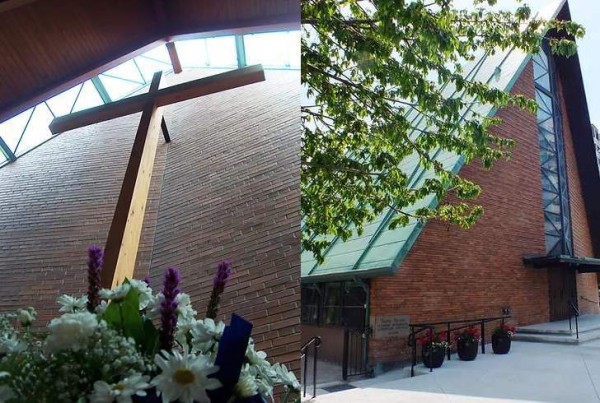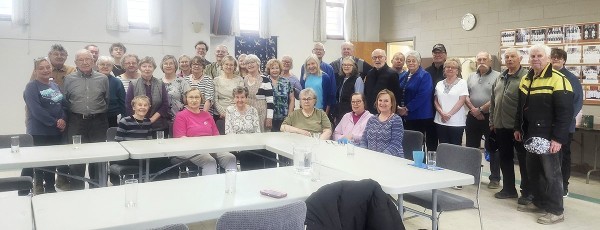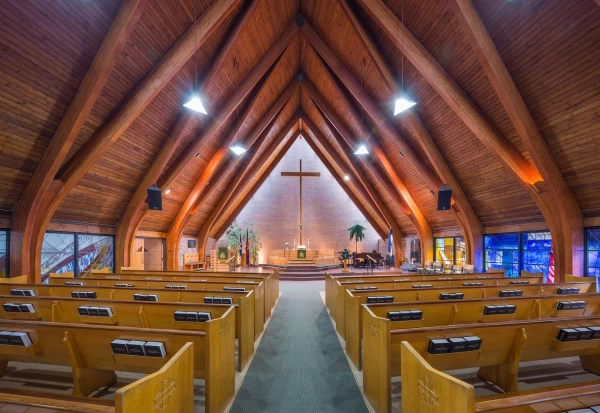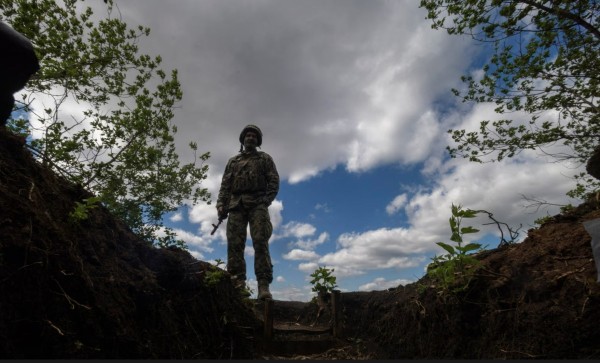The Background to the March 13th 2022 General Assembly
On Feb 28, 2022, a formal invitation for members to attend the general assembly of St. Peter’s Church was issued by the Congregational Council. That invitation informed members that the purpose of this meeting was to consider a resolution by which the members would give the Congregational Council permission to apply to provincial authorities to close the St. Peter’s Columbarium, as closure of the columbarium and re-location of the 311 urns of our ancestors which were lodged there, was a legal prerequisite for the Church to sell its property. Although the resolution was announced to have passed, its validity was challenged by some members. After the involvement of lawyers, the Congregational Council has now acknowledged that the meeting was unconstitutional, the resolution is void, and a new meeting must be held to let all members vote on the issue.
Why was the resolution to close the columbarium invalid?
Misinformation on Voting Rights and Eligible Voters: The invitation sent out in the name of the pastor and the Congregational Council, told members that the constitution of the Church stated that the only people who could vote at the March 13, 2022 meeting were those who, in the past year, had taken communion at least once, and had financially supported the congregation. That was incorrect: in fact, as the Congregational Council has now acknowledged, the Church’s constitution did not so restrict voting rights at this meeting.
As a result of this misinformation, a number of members — including members of the audit committee — opted not to attend because they understood from this invitation that they did not have the right to vote at the meeting. Some members who did attend, were turned away and refused a ballot with which to vote on the resolution, because they had not met these criteria.
In calling the meeting to order, the Chair, Naani Holsmer, announced that the Church only had 134 eligible voting members. She announced that of these, a total of 78 were present in person or by proxy, and that this met the quorum requirement of 10% of voting members. The Chair advised that the 78 votes represented at the meeting was made up of 52 voting members present in person, and another 26 represented by proxies. The chair’s announcement that 78 votes were present at the meeting was confirmed by the scrutineer, when the ballots were counted on a preliminary motion to defer the columbarium resolution until pandemic conditions had diminished.
The Council proposed a resolution for the members to allow it to apply for the order to close the columbarium, so the Church property could be put up for sale. Because of its importance, this was a “special” resolution — one which could only pass if supported by a 2/3rds majority of the votes cast. Council announced in advance of the meeting that they considered this to be a vote of confidence in the Council, so that if the closure resolution did not pass, the Council would resign.
The Vote and Voting irregularities
After debate, the resolution to close the columbarium was conducted by ballots distributed by the Council. Inexplicably, when the ballots were counted, the scrutineer announced that ballot box contained not the 78 votes which the Chair had said were present, but 84 votes. There were 6 more ballots in the box than the number of members the Chair had announced, and the scrutineer had confirmed, were represented at the meeting in person or by proxy.
Of these 84 votes, 56 were in favour of closure, 28 were opposed. These 56 votes were exactly the 2/3rds of the 84 required to pass the resolution. One ballot less, and the resolution would have failed. The Chair made no comment at the meeting — and has not commented since — about the extra 6 votes found in the ballot box in support of the closure resolution.
The Objections to the Validity of the Meeting Raised by Members
This discrepancy between the 78 votes present, established by both the Chair and the scrutineer, and the 84 ballots counted in the ballot box, along with other concerns about how the meeting was conducted, precipitated a letter to the Council by members of the congregation, who questioned the result and requested an impartial audit.
Unfortunately, the Council did not respond to these letters, except to acknowledge they had been received. As a result, the concerned members engaged outside legal counsel to bring their concerns forward.
Legal counsel for these concerned members investigated the matter and brought to the attention of the Congregational Council several grounds on which the March 13th meeting was unconstitutional, in breach of the legislation, and resulted in the columbarium resolution being invalid. These grounds were formally detailed by letter from legal counsel:
• The notice of meeting issued by the Council and the pastor had misrepresented members’ constitutional rights to vote.
• As a result, persons were misinformed as to their voting rights and did not come to the meeting.
• Specifically, the constitution does not say that only those members had a right to vote at the March 13, 2022 meeting who had taken communion and contributed financially to the Church in the past year.
• Rather, all adults on the membership register had the right to vote at the meeting.
• At the meeting, various members who had voting rights were wrongly refused a ballot by the Council.
• Both the Council and the pastor had publicly disclosed that the Church had over 1,400 members on December 31, 2020.
• There were no provisions in the constitution of the Church that could have resulted in the drastic reduction of voting members from over 1,400 on December 31, 2020, to the 134 on Council’s list for the March 13, 2022 meeting.
• With only 78 members represented, March 13 meeting did not have the necessary quorum of 10% of voting members required to conduct a valid meeting.
• The 10% quorum required by the constitution would be 10% of the voting members, or 141— almost double the number present in person or by proxy at the March 13, 2022 meeting.
• The form of proxy used was fatally non-compliant with mandatory statutory requirements for proxies, rendering the proxy ballots void.
On May 18, 2022, after due consideration, the Congregational Council has, through its lawyers, now acknowledged that:
• the March 13, 2022 meeting was not conducted in accordance with the constitution of the Church,
• there were no communion or contribution prerequisites to the right to vote at this meeting,
• the resolution to close the columbarium voted on in the meeting of March 13 is null and void, and
• a new meeting to put that resolution to the members would have to be held.
Discrepancies in the membership roster
The Church is required by law to provide the members access to the register of its members and former members for use in connection with the affairs of the Church, once a formal request is made on proper grounds. The Church is by law required to maintain such records.
That formal request was made after the March 13, 2022 meeting. The first list provided by the Council contained only 134 current voting members. This was the list which was used to screen members at the March 13, 2022 meeting.
After the concerned members’ legal representations showed that this first list wrongly filtered out members who had the right to vote, the Council said they had incorrectly interpreted the constitution and produced a second list of voting members. This second list now contained 414 voting members — showing that by their own count, the Council had improperly disenfranchised 280 members at the March 13th meeting. Also — after initially refusing to do so — Council also produced a list of 140 former members, saying that all of them had been deleted from the register on Dec. 31, 2018, for reasons that have not been disclosed. That adds up to 554 current and former members.
However, these numbers starkly contrast and cannot be reconciled with the membership statistics previously circulated by the Church. For December 31, 2020, their statistics showed 1,484 members. The Audit Committee in a report dated August 11, 2020, which the Council circulated for the 2020 congregational meeting, reported that there were 1,466 members, and even broke these membership numbers down into 9 age groups. On December 11, 2021, in Eesti Elu, Pastor Salumäe confirmed that the Church had 1,466 members.
This membership data previously circulated by the Church means that close to a thousand members have now vanished off the membership roster since the Audit Committee’s last report to the assembly. Some of the “missing” members who are not found on the Council’s latest lists even include recent graduates of confirmation classes at the Church.
It is hard to reconcile why active members of this Church are missing from the various iterations of the Council’s lists, especially when it is both a statutory and constitutional duty of the Church to maintain these lists up to date.
To live or to die: That is the question facing St. Peter’s Church!
The issues now facing this congregation will define its very existence. Surely, the widest participation of the St. Peter’s membership must be sought out and given a voice on these existential questions.
For that reason, it is incumbent upon the Council not to restrict voting rights, not to exclude the voices that must be heard, and to rectify any errors and discrepancies that are brought to their attention before the membership is called upon to make decisions relating to the future of the church.
Issues concerning the New Meeting
The Congregational Council has, after conceding the invalidity of the March 13th meeting, committed to calling a new meeting of the general assembly.
The Council has acknowledged that all members on the current members list will be entitled to vote — notwithstanding that they may not have taken holy communion or made financial contributions in the past year. The quorum will be 10% of the membership list.
Who are Voting Members? However, who are the people that are properly on the membership list remains to be determined, either through discussion and transparency, or formal process. As the data presented above shows, there are serious questions.
Voting Procedures. The Council has indicated that their intention is to only allow voting at this new meeting to be in person or by written proxy. This intended restriction by Council of voting rights during the continuing pandemic forces vulnerable members, however devout and however concerned with the future of St. Peter’s, to make a choice between their commitment to the Church and exposure to Covid infection that could be life-threatening.
Timing: Many members were exposed to Covid when the Estonian choir came to visit, and have learned the importance of caution. When this vote should be held, when many elderly members are not only sensibly cautious, but challenged with electronic systems, is another question that calls out to be resolved.
Decisions that affect the future of the church and church property need to be open to all members of the congregation. Our congregation has a sacred trust to preserve the heritage that our church has maintained for more than half a century. That trust has to be discharged by all members of the congregation, not a select few.
Friends of St. Peter’s Church
Note from the editors: Friends of St. Peter’s Church group consists of concerned members of St. Peter’s congregation who are known to the EWR. The group is currently in the process of being formally recognized. The contact information and website for the Friends of St. Peter’s Church is scheduled to be published next week.
See also: https://www.eesti.ca/notice-fr...

























